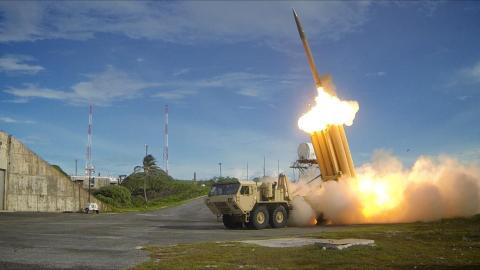The US’s long-held strategy to deter aggression entails, in part, providing support to allies who are under threat from shared enemies, and projecting power abroad to help keep the global commons safe. This strategy has kept the relative peace and maintained the international order that Americans and the world have benefited from since the Second World War. But Russia and China seek to supplant this international order by thwarting US strategy. They are developing weapons to target the US homeland in an effort to strong-arm Washington into pulling back support for its allies and to erode its ability to project power.
To strengthen the credibility of deterrence, Washington should update its missile defence policy and deploy additional missile defence capabilities. This will not only defend critical infrastructure, defences and public services, but it will also help to deter both Russia and China from considering such an attack, by increasing their uncertainty over whether it would succeed.
This was one of the recommendations of the bipartisan US Strategic Posture Commission, on which both of the authors served. The report recommends that ‘The United States develop and field homeland IAMD [Integrated Air and Missile Defense] that can deter and defeat coercive attacks by Russia and China…’
Vladimir Putin has repeatedly threatened Western countries over many years, including with nuclear force. And Putin’s Russia has conducted missile training near US shores, against which Washington has little defence. Moscow is also developing and deploying new armaments such as nuclear long-range torpedoes, nuclear cruise missiles, hypersonic missiles, cyber weapons, and unmanned aerial systems. China’s advances in these areas are in many ways more significant, and could be used to subjugate democratic Taiwan by military force.
Adversaries can threaten US targets with either nuclear or non-nuclear precision and limited strikes against which we have little defence, with the aim of frightening but not enraging Washington. Putin and Xi Jinping believe that such ‘coercive’ strikes could deter the US from defending its allies.
Coercive strikes would be designed to not be so immediately deadly as to provoke a nuclear or large-scale response, but destructive enough to cause US leaders to back down from the fight. Russia or China may calculate that attacking the US directly would spark fear in the electorate and paralyse Washington. Their aim would be to convince the US to stand down or forgo assistance to an overseas ally rather than risk further escalation with a nuclear-armed adversary. This would help Russia and China achieve their long-sought aim of breaking the US-led order that Americans have benefited immensely from since the Second World War.
America’s vulnerability could affect an adversary’s perception such that it may believe an offensive missile strike would be effective. To bolster the credibility of its deterrence architecture, the US should, adapt its missile defences in three ways.
First, Congress should officially amend US missile defence policy to defend the homeland from coercive strikes no matter the source. When former President George W Bush withdrew the US from the Anti-Ballistic Missile Treaty, he initiated the development of a missile defence system that was not meant to defend the US homeland against Russian and Chinese missiles. The layered system was designed to defeat limited strikes from rogue states and only accidental or unauthorised attacks by peers.
But even this more modest plan was met with criticism. Some public officials denounced the plan as potentially ‘destabilising’ the US’s relationship with Russia. Then Chairman of the Senate Foreign Relations Committee Joe Biden said, ‘Are we really prepared to raise the starting gun in a new arms race in a potentially dangerous world?’
There was an arms race, but the US was not a participant. The US did not deploy an advanced system to defend against peer threats, while Russia and China raced to build highly sophisticated defences. US missile defence policy has adapted once before to defend the homeland against rogue threats; it must adapt once again to defend against peer coercive threats.
Second, the US must identify the areas, facilities and capabilities an adversary is most likely to strike. These include sensors; bases responsible for sealift; significant components of the defence industrial base; and civilian infrastructure sectors critical to the functioning of society, such as energy, water and transportation.
Third, the Commission agreed that the ‘DOD [Department of Defense] must look at new approaches to achieving US missile defence goals, including the use of space-based and directed energy capabilities, as simply scaling up current programs is not likely to be effective’. The Commission did not recommend specific technologies. But we believe that thanks to rapid technological advancements and the lower cost of satellite launches, space-based solutions are feasible and should be considered. Directed energy technology is finally maturing and may provide non-kinetic options for US defence.
Strengthening US homeland missile defences would be a boon for US strategy: making conflict, even nuclear conflict, less appealing to adversaries; limiting damage should conflict still occur; and safeguarding US leaders’ ability to resist coercion and act in the national interest. Deterrence consists of the ability to impose costs on an adversary (offense), to deny benefit to the adversary (defence), and to communicate both credibly. The US has not taken full advantage of the defence element of deterrence, and it is time it started.





















